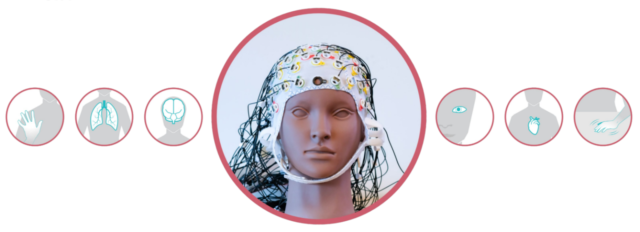Summary
Reflections on combining behavioral and physiological data to understand how bodily (i.e., heart-related) rhythms and behavioral rhythms sync up
When most people picture scientific research projects on cognition or how the mind works, they immediately jump to research about the brain, the widely believed epitome of a thought machine that guides our every impulse, bodily movement, and decision, like a puppeteer wielding an incredibly complicated string puppet. However, recent work in the field of embodied cognition has in fact indicated that not only is cognition affected by processes outside of the brain—such as interactions with one’s environment, or feedback from other physiological systems like the cardiorespiratory and digestive systems, but all of the complex physiological activity in our brain AND extracranial body are actually coupled together in rhythms that fundamentally guide how we behave, mentally process information, and experience the world in real time. As opposed to being a kind of Cartesian dual puppet animated by the brain, the body is in fact an integral subsystem of the larger network that lends to our every thought.
As such, my cognitive science research project has been investigating methods for systematically analyzing how our body movements and heart rhythms couple together to influence not only how sense the world around us, but the degree of “agency” (which can colloquially be thought of as ownership or control over our own actions) we feel that we have over our sensations. In the study, we first observed people as they used a new sensory tool that enabled them to “see” objects around them while blindfolded. They either 1) were capable of actively moving the tool and autonomously guiding how they “saw” the objects, or 2) had the tool moved for them so they could passively “see” the objects but not control how they were seeing them. Now, we’ve moved on to analyzing the behemoth of data we collected during our experiments in these two conditions.
To investigate the role of agency in sensory perception, I’ve specifically focused on analyzing the relationship between our study participants’ movement rhythms and heart rhythms while seeing objects in the two agency conditions. Their movement rhythms were calculated based on their physical movements’ patterns of acceleration and deceleration. For instance, one way of studying movement rhythms is to examine when participants decide to reverse their movements’ acceleration and either slow down or speed up. Another is to look at their acceleration peaks and troughs to assess when they’ve made reversals in their movement directions. So far, I have been comparing where these two types of acceleration reversals fall within specific heart phases in each of the two groups to see if either condition (active or passive sensation) leads to a particular pattern of heart phase-coupled movements. Based on the embodied cognitive framework, I predict that because the participants in the active condition could control their movements, their movement rhythms likely synched up with their heart rhythms, leading them to feel more connected to their sensory experiences while using the tool. Meanwhile, because those in the passive condition couldn’t control their own movement rhythms, these movements were likely desynchronized from their heart rate rhythms, resulting in them feeling less connected to their sensory experiences.
The process of actually analyzing the data has been a grueling one, as data processing for such a new method has few pipelines or past studies whose methods I can easily adapt. But after many weeks of data cleaning and python coding, we’ve nearly finished our very own data processing pipeline. All that’s left is to downsample the data so it isn’t so needlessly dense and push it through for the analysis. Perhaps by next week, we’ll at last have some decent results empirically validating embodied cognitive science! The next step would be to (hopefully) write a nice paper.
